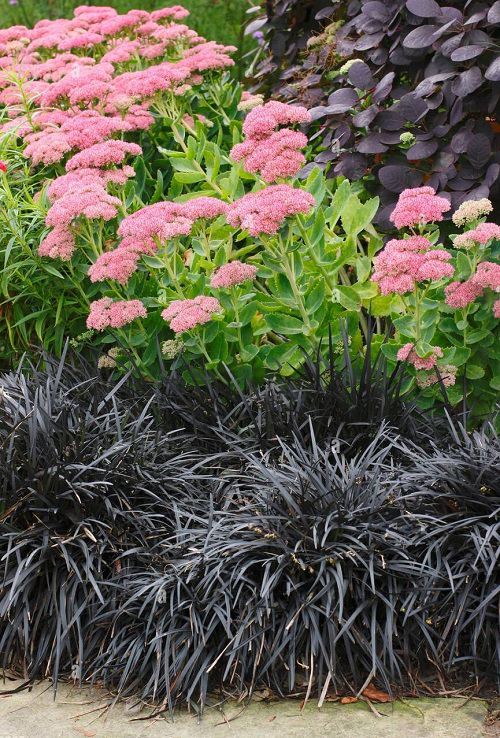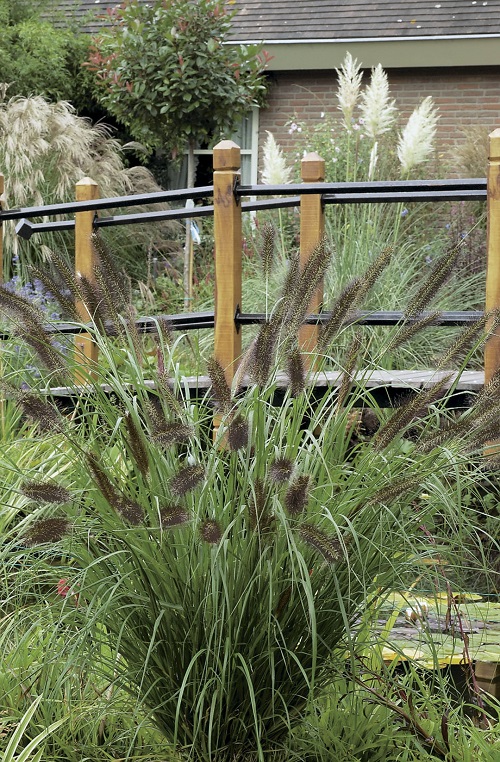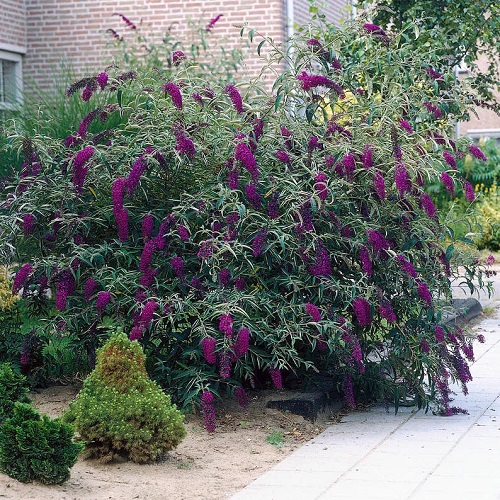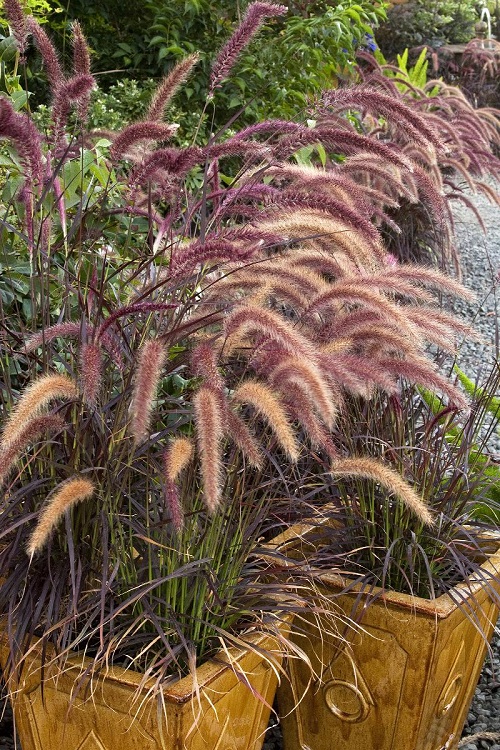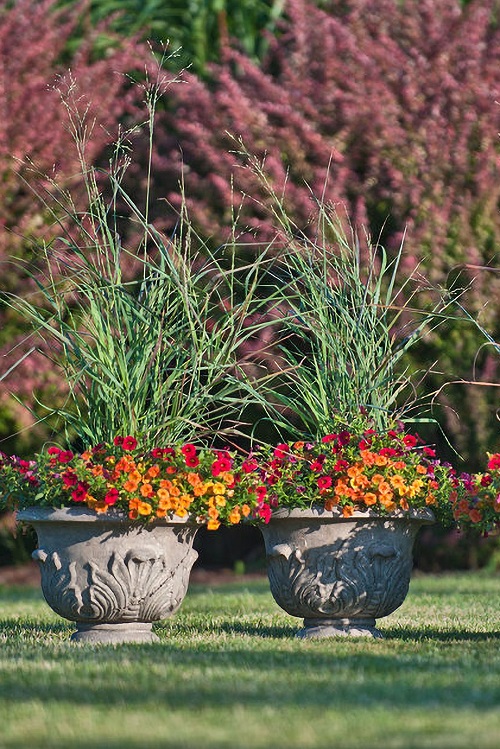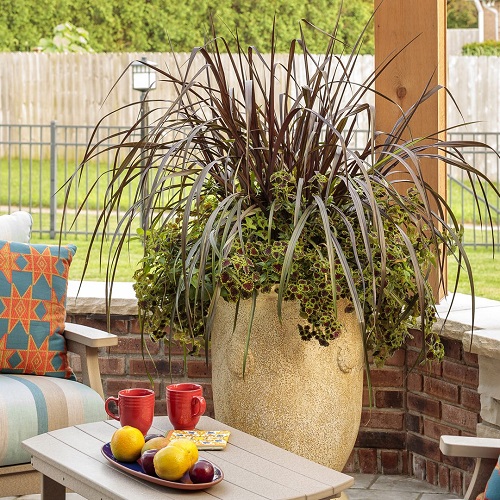Here are some of the Best Black Grasses for Landscaping and Containers to add that mysterious appeal to the garden!
Here are some amazing specimens, popular for their dark, almost black foliage. You may provide a stunning contrast to other plants and flowers by growing these Best Black Grasses.
Find the Best Ornamental Grasses for Shade here
Best Black Grasses for Landscaping and Containers
1. Black Mondo Grass
Botanical Name: Ophiopogon planiscapus
USDA Zones: 6-11
Black mondo grass is a popular black grass that is well-suited for container gardening. This grass grows to about 6 inches in height and produces striking, deep purple-black foliage.
2. Black Fountain Grass

Botanical Name: Pennisetum alopecuroides ‘Moudry’
USDA Zones: 5-9
Black fountain grass is a stunning ornamental grass that features deep black foliage that grows in a fountain-like shape. It can tolerate a wide range of growing conditions.
3. Black Beauty Dwarf Fountain Grass
Botanical Name: Pennisetum alopecuroides ‘Black Beauty’
USDA Zones: 4-11
Black beauty dwarf fountain grass is a compact ornamental grass that features deep black foliage and soft, fluffy seed heads that grow on long stems.
4. Black Knight Butterfly Bush
Botanical Name: Buddleja davidii ‘Black Knight’
USDA Zones: 5-9
This compact ornamental grass does best in full sunlight and features deep black-purple foliage that grows in a neat, round shape.
5. Blackout Switch Grass

Botanical Name: Panicum virgatum ‘Blackout’
USDA Zones: 3-9
This ornamental grass features deep purple-black foliage that provides a striking contrast to other plants in the garden. It produces airy, pink-tinted flowers in the summer.
6. Purple Fountain Grass
Botanical Name: Pennisetum setaceum rubrum
USDA Zones: 7-11
With its dark, purple foliage, it adds texture and color to garden beds and landscapes. In the summer months, the grass produces delicate, purple plumes.
7. Cheyenne Sky
Botanical Name: Panicum virgatum ‘Cheyenne Sky’
USDA Zones: 4-9
It displays dark green foliage during the spring and summer months. It produces showy, airy panicles in shades of pink and purple that add a pop of color to the landscape.
8. New Zealand Flax
Botanical Name: Phormium ‘Platts Black’
USDA Zones: 7-11
Phormium ‘Platts Black’ is an evergreen perennial that is known for its dark foliage display. Its foliage is deep purple-black in color and produces stalks of small yellow flowers.
Look at some Stunning Tall Grasses for Privacy here
Tips for Growing Black Grass
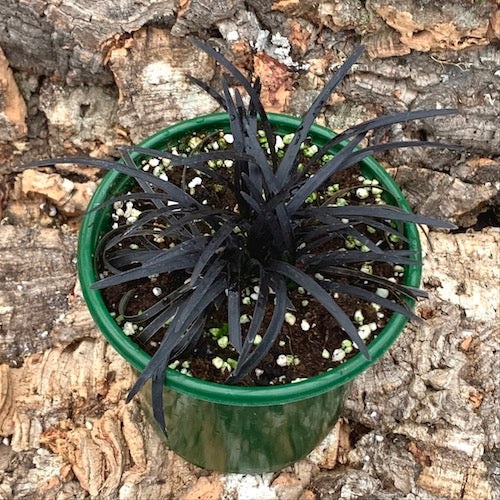
1. Soil Type and Drainage
These plants prefer well-drained soil. Adding organic matter like compost to the soil before planting can improve drainage and soil quality.
2. Sun Exposure
Most black grasses prefer full sun to partial shade. Make sure to choose a planting location that receives adequate sunlight for the grass to grow and thrive.
3. Watering
Drought tolerant once established, these still require regular watering during the first few weeks after planting.
4. Fertilization
These plants generally do not require frequent fertilization. Although you can supply nutrients all through the growing season by using a slow-release fertilizer in the spring.
5. Maintenance
These ornamental plants generally require minimal maintenance. Deadheading or cutting back the grass in the fall can help promote healthy growth in the following year.
Find the Best Types of Fountain Grasses here
Conclusion
Whether you prefer the deep black foliage of black mondo grass or the fluffy seed heads of black beauty dwarf fountain grass, there is a black-grass out there that is perfect for you. So why not try adding some black grasses to your garden today and see how they can transform your outdoor space?

